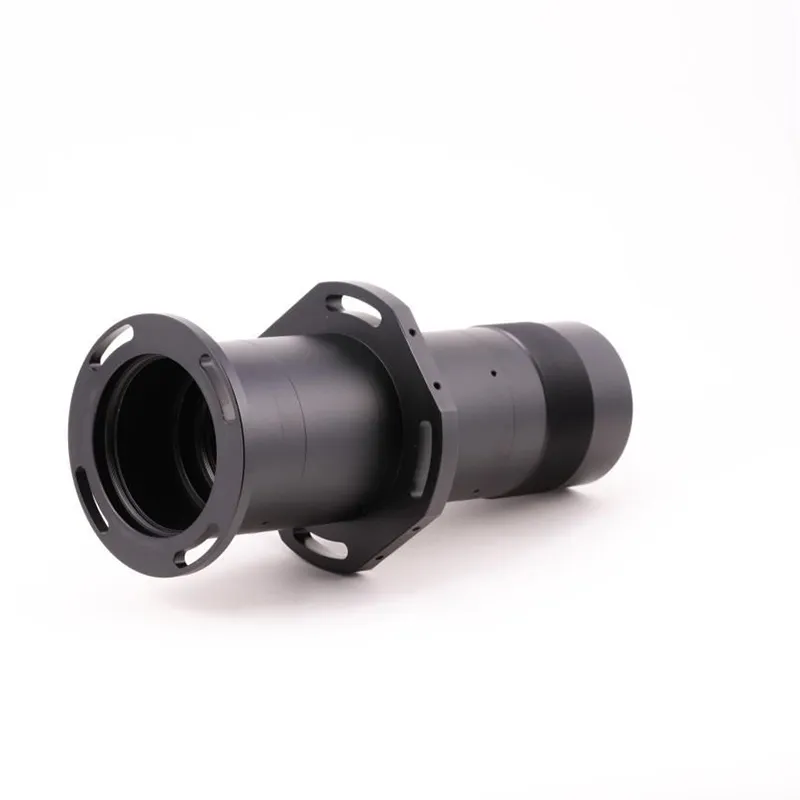Understanding Industrial Lens Mechanical Parts: The Backbone of Precision Optics
2024-11-01
In the world of optics, precision and reliability are paramount. Whether used in cameras, microscopes, telescopes, or various industrial applications, the performance of optical systems heavily relies on the quality of their components. Among these, industrial lens mechanical parts play a crucial role in ensuring that optical devices operate smoothly and effectively. This blog delves into the significance of these components, their applications, and the latest advancements in technology shaping the industry.
What Are Industrial Lens Mechanical Parts?
Industrial lens mechanical parts refer to the various components that support, align, and control the movement of lenses in optical systems. These parts include lens mounts, focus mechanisms, aperture controls, and various mounting and housing elements. Each component serves a specific function, contributing to the overall performance of the optical device.
1. Lens Mounts: Lens mounts are critical for securing lenses in place. They must provide a stable and precise fit to ensure that the optical axis aligns correctly. Different types of lens mounts, such as screw mounts, bayonet mounts, and fixed mounts, cater to various applications and requirements.
2. Focus Mechanisms: Focus mechanisms enable the user to adjust the distance between the lens and the image sensor or film. This adjustment is crucial for achieving sharp images. Common designs include helical focusing systems and rack-and-pinion mechanisms, each offering different advantages in terms of precision and ease of use.
3. Aperture Controls: Aperture controls regulate the amount of light entering the optical system. By adjusting the size of the aperture, users can control depth of field and exposure. Mechanical parts such as iris diaphragms and stepper motors are often used to facilitate this adjustment smoothly.
4. Housing and Support Structures: The housing of an optical system provides protection and structural integrity. It must be designed to minimize vibrations and external disturbances that could affect performance. Robust materials, such as aluminum or specialized polymers, are commonly used for durability and lightweight characteristics.
The Importance of Precision in Industrial Lens Mechanical Parts
Precision is a non-negotiable factor when it comes to industrial lens mechanical parts. Any misalignment or lack of stability can lead to optical distortions, reduced image quality, and compromised functionality. In applications where accuracy is vital—such as in medical imaging, scientific research, and aerospace—high-quality mechanical parts are essential.
1. Enhanced Image Quality: Precision mechanical parts ensure that lenses are aligned correctly, which is critical for maintaining image clarity and color accuracy. Any deviation in alignment can lead to blurriness or aberrations in the final image.
2. Improved Reliability: Durable and precisely engineered mechanical parts contribute to the overall reliability of optical systems. This reliability is particularly important in industrial applications where downtime can be costly.
3. User Experience: Smooth and intuitive focusing and aperture adjustments enhance the user experience, making it easier for operators to achieve the desired results quickly.
Applications of Industrial Lens Mechanical Parts
Industrial lens mechanical parts are used in a wide array of applications across various sectors:
1. Photography and Videography: In cameras, lens mounts and focus mechanisms are essential for achieving high-quality images and videos. The demand for advanced optical systems has led to continuous innovations in mechanical parts.
2. Medical Imaging: In devices such as endoscopes and microscopes, precision optical components are critical for accurate diagnostics. Reliable lens mechanical parts ensure consistent performance in sensitive medical applications.
3. Scientific Research: Optical systems used in laboratories and research facilities require highly accurate and reliable components. Whether for spectroscopy, microscopy, or other applications, industrial lens mechanical parts play a vital role in data collection and analysis.
4. Aerospace and Defense: In aerospace applications, optical systems are often used for navigation, surveillance, and targeting. High-quality lens mechanical parts ensure that these systems function flawlessly under various conditions.
5. Manufacturing and Automation: Optical sensors and cameras used in manufacturing and automation rely on precise lens mechanical parts to inspect and monitor processes effectively. These components contribute to quality control and efficiency in production lines.
Advances in Technology
The field of industrial lens mechanical parts is continuously evolving, driven by advancements in technology and materials. Some notable trends include:
1. Miniaturization: As devices become smaller and more compact, there is a growing need for miniaturized optical systems. This trend demands precise and efficient lens mechanical parts that can perform effectively in limited spaces.
2. Smart Optical Systems: The integration of smart technologies, such as artificial intelligence and machine learning, into optical systems is on the rise. This integration requires sophisticated mechanical components that can support automated focusing and aperture adjustments.
3. 3D Printing: The advent of 3D printing technology has opened new avenues for producing complex lens mechanical parts with intricate designs. This approach allows for rapid prototyping and customization, reducing lead times and costs.
4. Sustainable Materials: The push for sustainability in manufacturing has led to increased research into eco-friendly materials for optical components. Using recyclable and biodegradable materials can help reduce the environmental impact of optical systems.
Conclusion
Industrial lens mechanical parts are the unsung heroes of the optical industry, providing the stability and precision necessary for high-performance optical systems. As technology continues to advance, the importance of these components will only grow, driving innovation and enhancing the capabilities of various applications.
Investing in high-quality industrial lens mechanical parts is essential for manufacturers and users seeking reliability and performance in their optical devices. By understanding the significance of these components, we can appreciate the intricate balance of engineering and design that goes into creating the optical systems that shape our world today.



